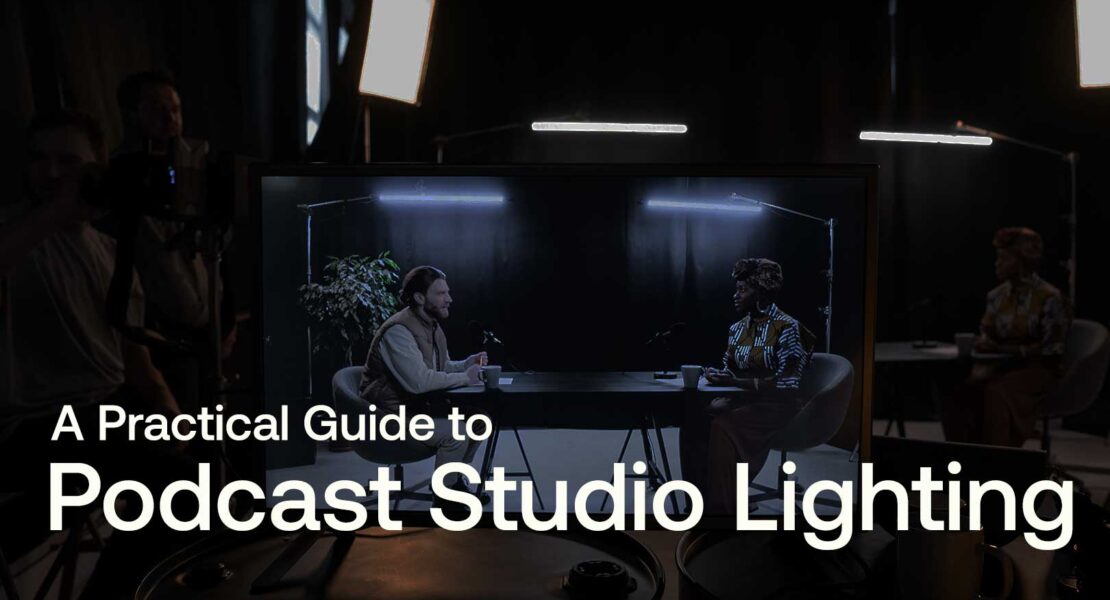Introduction
Today, clear audio and lighting are two of the fastest, most cost-effective ways to enhance the professional quality of podcast video content.
Thankfully, modern LED fixtures make it possible to achieve high performance lighting without the complexity or cost of a television studio or broadcast environment.
In this guide, we will share a practical and cost-effective approach to professionally light your podcast studio, with a focus on image clarity and subject visibility.
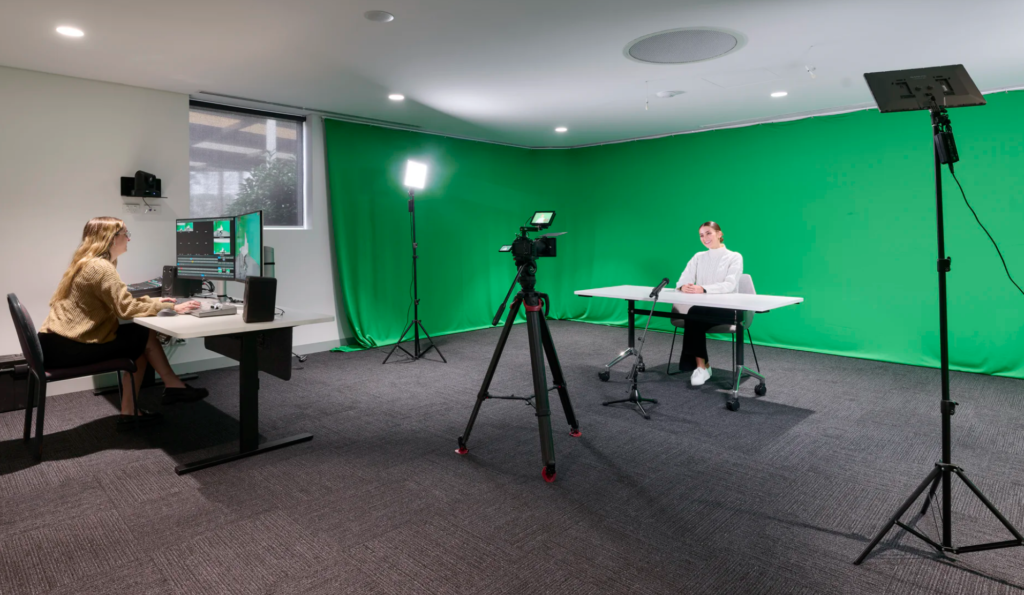
Why Lighting Matters
Lighting serves multiple purposes in any video production environment. At a basic level, it ensures the camera’s image sensor operates within its optimal range, avoiding underexposed (grainy) or overexposed (washed-out) footage. Just as microphones perform best when their input levels are neither too soft nor too loud, image sensors require appropriate lighting levels to produce clear, balanced visuals.
Good lighting also helps separate the presenter from the background, improving visual focus and depth. These principles of clarity and separation are the foundation of effectively lighting podcasting and video studio spaces.
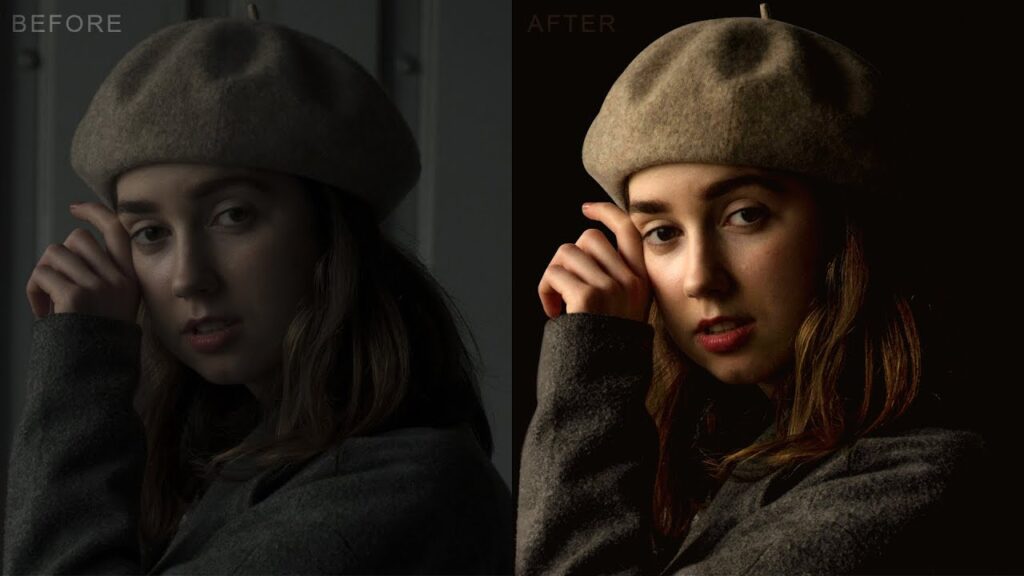
Three-Point Lighting: The Ideal Setup
While full three-point lighting is ideal, many podcasters can achieve great results with just one or two of the lighting options below. Here’s a breakdown of the typical light sources required for a podcast studio environment:
- Key Light: This is your primary light source, aimed at the subject (usually the presenter). Ring lights offer a simple front-on option, but they tend to flatten the subject’s features and mute facial expression. A better approach is to position an LED panel at roughly 20 degrees to the side and slightly above eye level. This casts subtle shadows that reveal your face’s natural contours better portraying subject’s expressions and emotions. The further the light is positioned horizontally or vertically can exaggerate the emotional and dramatic aspect of the video. Generally, each subject in the studio will require a key light.
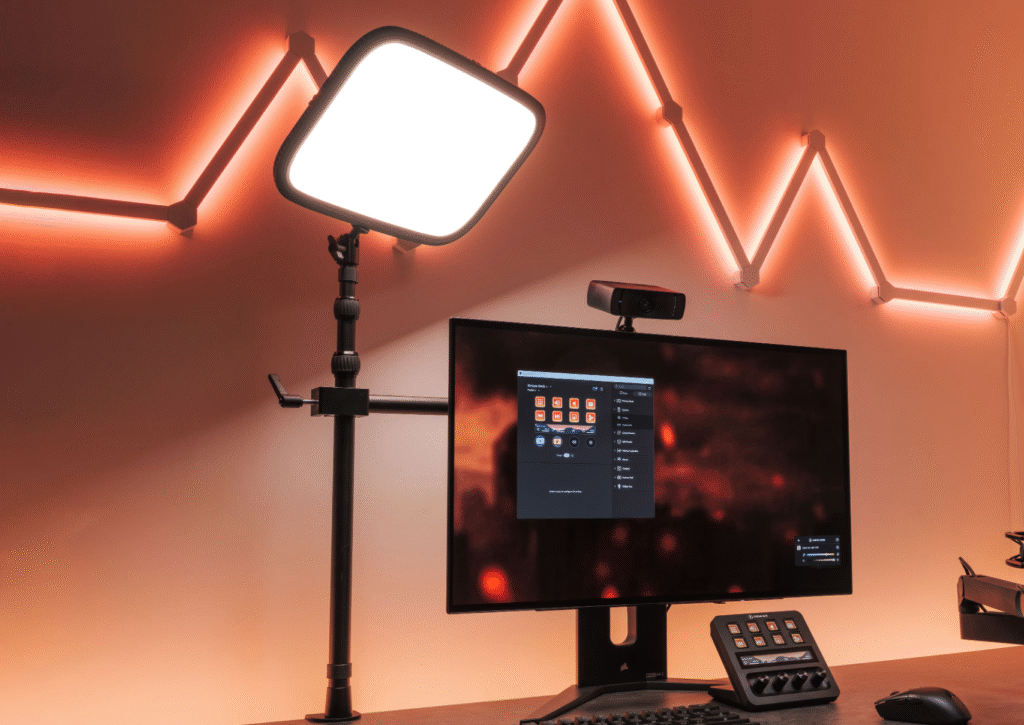
- Back Light: A backlight is used to provide contract between the subject and the background. Without a back light, subjects may appear flat, difficult to focus on, and blend into the scenery. A back light is key for creating separation by highlighting the background surface (e.g. a curtain or scrim) or placing a light above and behind the presenter to create a ‘halo’ effect. This technique is commonly used on TV news broadcasts and may appear a bit clinical. To soften the look of back lighting, try experimenting with brightness and colour as both will help with the desired contrast. Most LED fixtures offer various colour temperature settings, and some have full colour control.
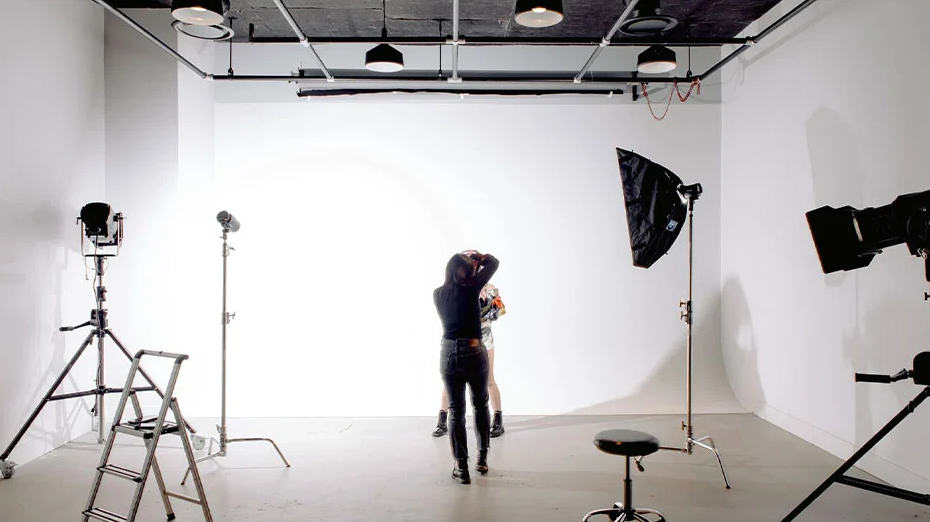
- Fill Light: The fill light is optional for a podcast studio but its uses are diverse and effective. The fill light can be used to light the general area, provide highlights to the backdrop or other items, or to soften the effect of the key light. Placing the fill light at a contracting angle to the key light allows you to balance and enhance the a subject’s shadow and highlight facial expressions. Again, varying brightness and position will provide different effects.

Colour Temperature & Mood
Colour temperature, measured in Kelvin (K), affects how warm or cool your video appears. While modern cameras and software handles white balance automatically, understanding temperature is still useful.
- 3000K–4000K (Warm White): Gives a welcoming, friendly tone—ideal for key and fill lighting.
- 5000K–6000K (Cool White): Mimics daylight and works well for background or accent lighting.
Colour also conveys emotion. Warm tones feel inviting and personal, while cooler tones feel more clinical or detached. Experiment to find a palette that suits your content and brand.
Most modern LED fixtures are dimmable and offer adjustable colour temperature, making it easy to fine-tune light levels to suit the subject and recording equipment. Adjustments can be made in real time using your camera or phone preview, allowing you to avoid harsh shadows, glare, or visual noise.
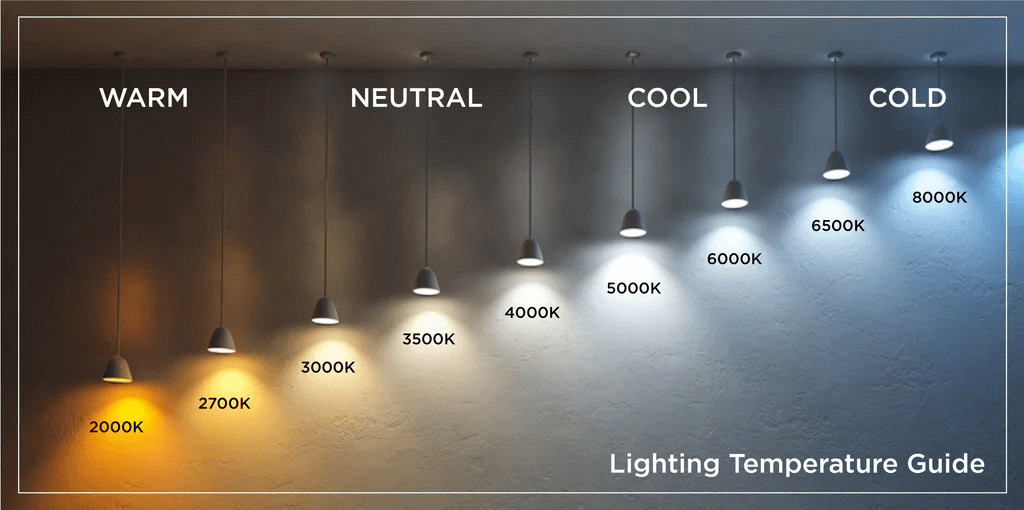
Image credit: Led A Plus
Final Thoughts
There is no single ‘correct’ way to light a podcast studio. What matters is that the presenter is clearly visible, the background supports and doesn’t distract, and the overall visual tone aligns with your brand and messaging.
With modern LED lighting, even a basic and inexpensive lighting setup can dramatically improve the quality of your video.
We recommend experimenting with different fixtures, positions, and colour temperatures to discover what works best for your space and content style.

Image credit: Jay P. Morgan of The Slanted Lens and their excellent article on Three Point Lighting.
For more detailed guidance on selecting the appropriate equipment for your podcast studio, feel free to contact us at info@utconsulting.com.au or call and speak with our team at: +61 3 9601 6555.

